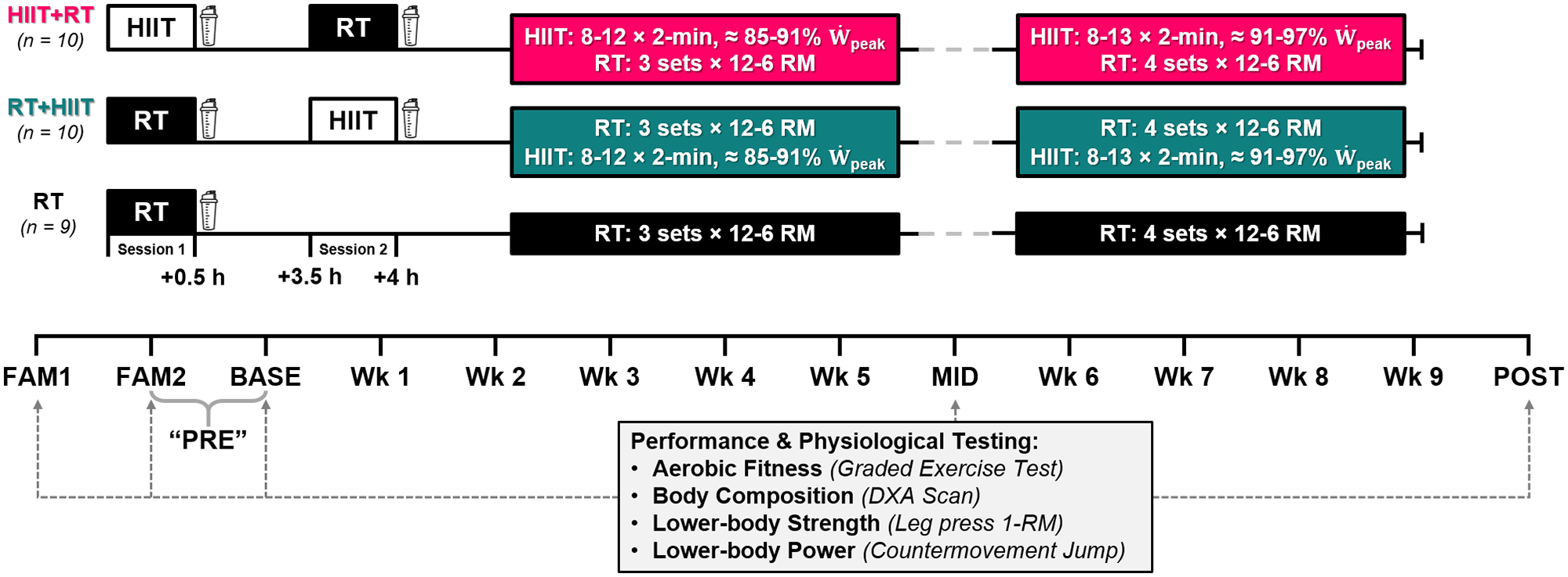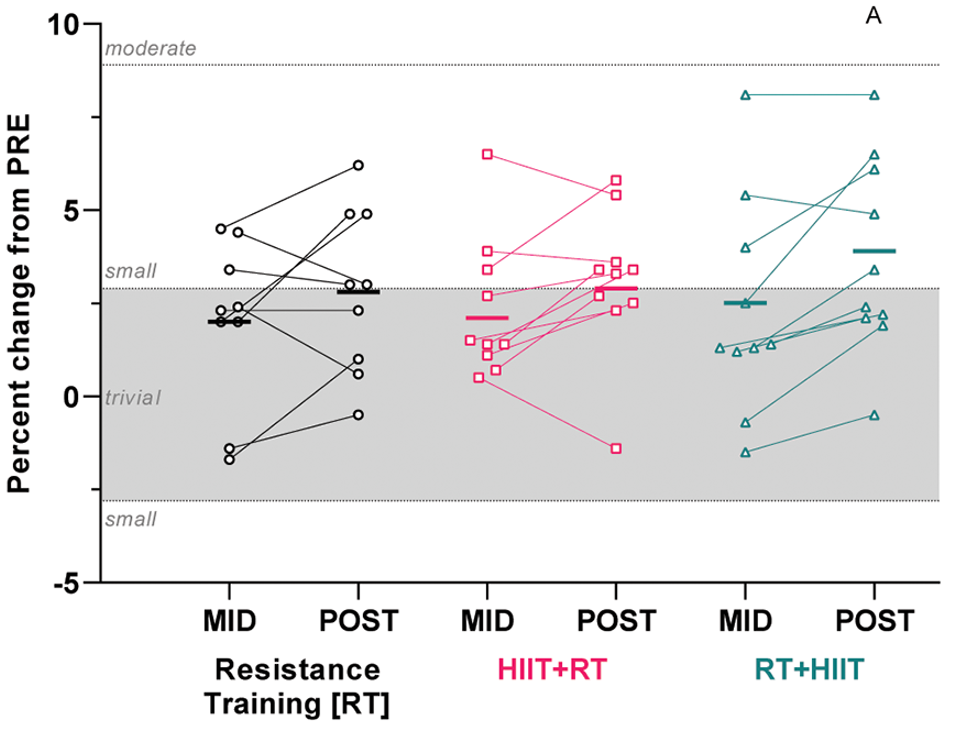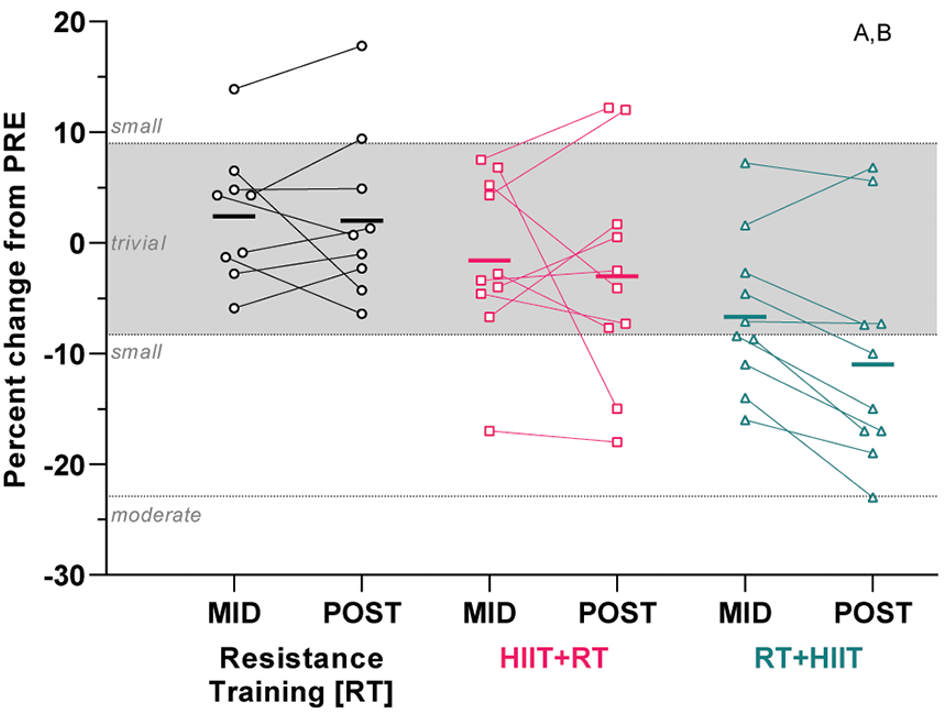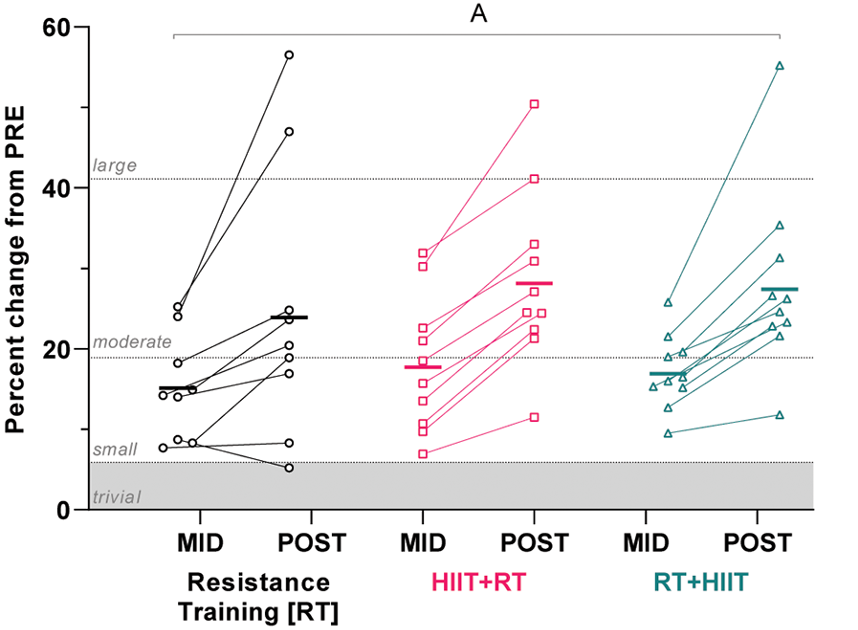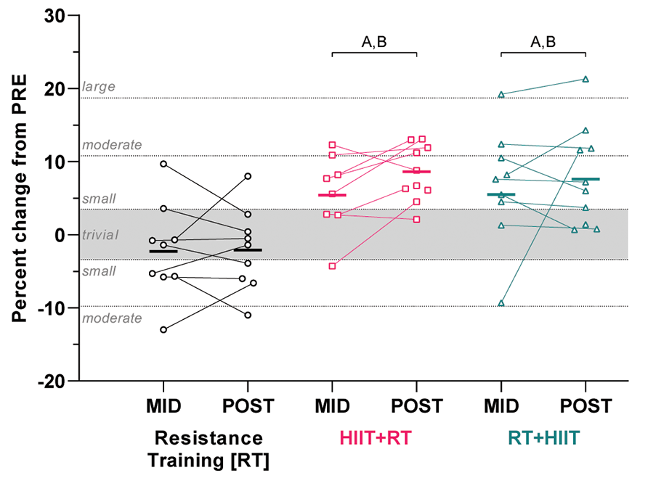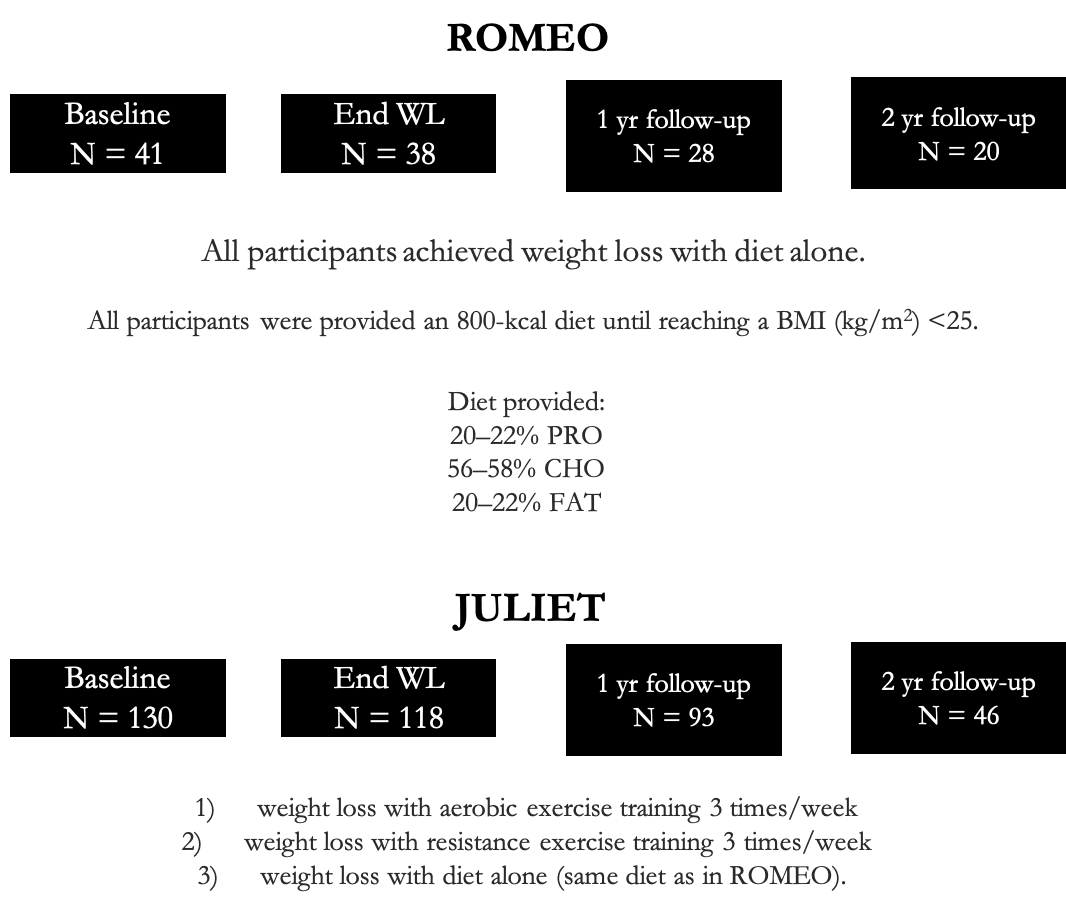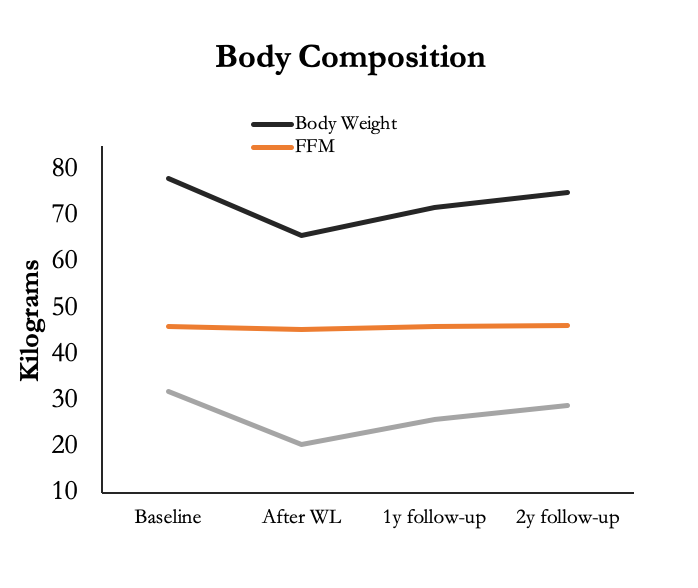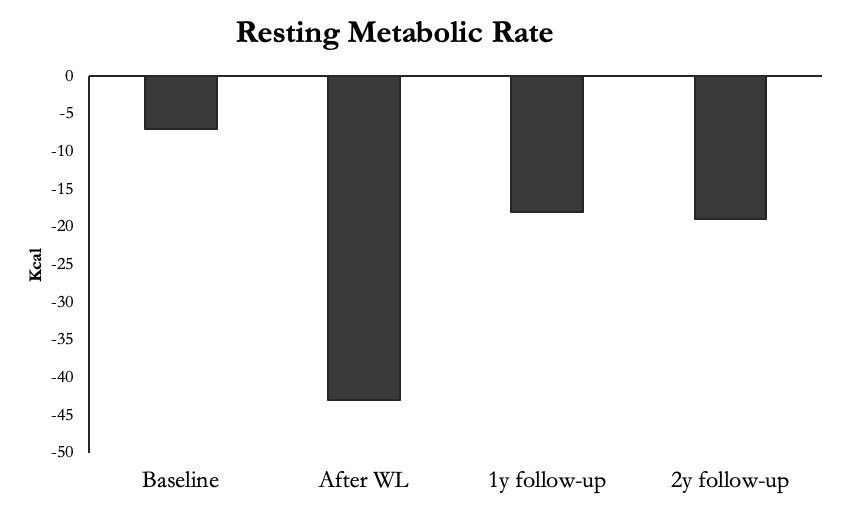Each month I will cover two research articles on nutrition, training, sleep, supplements, or anything else that might help you. If you’d like me to cover a specific study next month send me a message on Instagram.
*Note from Brandon: if you want to learn how to interpret research go read each study before reading the breakdown below, take notes, then compare your interpretation to mine. I’ve now included a background section for those who only want to read my review and not the full paper.
[Rather listen to this article? Perfect – we recorded a podcast on it (below). I would recommend reading this AND THEN listening, if possible. Will help you find your own conclusions, then hear ours]
Study #1
Big Question: Does it matter if we do HIIT before or after resistance training?
Scientific Question: What is the impact of concurrent training and exercise order on the development of strength, lean mass, power, as well as aerobic fitness, over nine weeks in healthy, moderately-active men?
Why
Concurrent training combines both endurance and strength training. There have been a number of studies over the past few decades to help us determine the best timing, modality, and intensity of concurrent training based on our main goal (strength, hypertrophy, endurance). A meta-analysis from 2012 found that the best modality for strength and hypertrophy was combining strength training with cycling. The findings showed a fairly small benefit compared to running. The rationale is that it’s easier to recover from biking than running. The study also found that keeping the endurance sessions short was better for hypertrophy, strength, and power. However, if we wanted to lose fat then running was better of the two modalities. At least that’s what we use to think. Over the past eight years, the evidence has changed quite a bit. I’ll cover how in the discussion below and give some tips to help you program endurance and resistance training to get the most bang for your buck.
From a mechanistic perspective, endurance training activates the AMPK pathway, which inhibits the Akt/mTOR/ p70S6K1 (protein synthesis) pathway and, could hinder muscle growth. This has been shown a number of times, and the main factor is the timing of the exercise. The MPS pathways are activated for much longer than the AMPK pathway, so if we separate the two we can see the benefits of both training modalities. Yet, those are acute cellular changes that may not pan out over the long-term.
Who
29 healthy, moderately-active men (age = 24.5y, weight = 74.9kg) performed either resistance-only training (RT, n = 9) or same-day concurrent training whereby high-intensity interval training was performed either 3 hours before (HIIT+RT, n = 10) or after resistance training (RT+HIIT, n = 10), for three days per week for 9 weeks.
Study Details
This study was fairly straightforward. Participants had two training blocks of four weeks, separated by a testing week, which somewhat serves as a deload. The benefit of this midpoint testing was to re-evaluate training parameters for relative intensity and workload of the HIIT program. As you can imagine, after four weeks of HIIT you’d probably be much more fit. The following image depicts an overview of the study. The HIIT sessions were done 3 hours before or after the RT sessions.
Figure 1. Experimental Design
In terms of nutrition, dietary intake was recorded at baseline using 3-day food diaries (including one weekend day), which was analyzed using an online nutrition tracking application (https://cronometer.com/). The authors gave whey protein (0.25 g/kg/BW) immediately after each training session, which is a dose that maximizes post-exercise MPS. Participants were instructed to maintain their normal physical activity levels throughout the study.
You can see the resistance training program below. The intensity and volume progressed from 3–4 sets of 12–6 repetitions with had 2 minutes of rest between sets. They trained 3x per week.
Table 1. Training Program
The HIIT consisted of cycling for multiple 2-minute intervals at 90-100 RPM, each separated by 1-minute recovery periods. The intervals and intensity (aka work capacity) increased across the training program to ensure progressive overload. The participants started with 8 HIIT intervals and worked up to 13 by the end of the study.
Results
The outcomes were body composition, 1RM leg press, and Vo2 peak. These were assessed at baseline, at the midpoint (week 5), and at the end of the study (week 9).
Let’s start with body composition. Rather than recreate the graphs like normal, I’ll use theirs since they have individual data points. First, let’s ignore the trivial (grey) lines and focus on the percentages. From the baseline, the RT group improved ~3% in total. The HIIT+RT group improved about the same (+3%), but the RT+HIIT group improved a tiny bit more from start to finish (+4%).
What you’ll also notice is that most people improved from mid to post. If we look closely we can see that there were some minor differences between groups, with 3 people in the RT and HIIT+RT group decreasing in lean mass from the midpoint to post, but only 1 person decreased lean body mass from midpoint to post in the RT + HIIT group. This could be due to changes in diet or variation in the measurements. Ultimately, there were no significant differences between groups and the overall gain in lean body mass was minimal.
Figure 2. Total Lean Mass
Fat mass changes were also fairly small, with the HIIT groups both losing fat whereas the RT group actually gained a small percentage of fat mass (~1%). The HIIT+RT group lost ~4% fat mass while the RT+HIIT group lost ~11%. That’s a big difference for only 9 weeks. Take a close look at the graphs below and notice that one person in both the RT group and the HIIT+RT group had large changes from mid to post-testing. It’s probably not likely those people lost ~10+ % fat mass in four weeks, so there may be something going on there. Likewise, there was one participant who gained ~10% fat mass from pre to midpoint, then another ~5% from mid to post. We’re going to need to check some diet logs. Some of these people were definitely in a deficit. This could be due to the escalating HIIT protocols, which would burn more calories over time.
Figure 3. Total Fat Mass
What about performance? Maybe we want to improve or maintain strength instead of worry about gaining lean mass. Well, all of the groups improved from baseline by about 15-20% at the midpoint, then up to about 25-30% at the endpoint. You can see from the graphs below that some people improved substantially in each group. Furthermore, there seems to be a larger increase in the groups who did HIIT than the group who only completed RT. Given all of the participants were leg pressing three times per week, and doing it first in the resistance training program, we can believe these massive gains.
Figure 4. Leg Press 1RM
When we look at the VO2 peak data we see something we would very much expect: the HIIT groups improved much more than the RT-only group. When comparing HIIT before or after RT there wasn’t much of a difference. You can see the VO2 peak data below.
Figure 5. Vo2 peak
Author’s Answer
In moderately-active males, concurrent training, regardless of the exercise order, presents a viable strategy to improve lower-body maximal strength and total lean mass comparably to resistance-only training, whilst also improving indices of aerobic fitness. However, improvements in CMJ displacement, force, and power were attenuated when RT was performed before HIIT, and as such, exercise order may be an important consideration when designing training programs in which the goal is to improve lower-body power.
My Answer
In almost every outcome from this study, there is a slight advantage for doing HIIT after RT. It’s not always significant but it is there. It’s also important to note that HIIT didn’t interfere with the strength or hypertrophy increases compared to RT alone. That’s comforting.
As I started to dig into the literature around concurrent training I noticed that I had a lot of catching up to do. It seems that the original Wilson et al., 2012 study didn’t report any of the data they used in their analysis. That’s a big issue. In 2016, an opinion piece was published by Murach & Bagley indicating that most studies have a minimal effect on hypertrophy in the quad, and concurrent training might even be beneficial. It won’t prevent your adaptations, but they won’t be optimized either. This would indicate that the interference effect doesn’t exist.
Figure 6. Data from Murach & Bagley
Moving forward to 2018 there were two meta-analyses published on concurrent training. The first was by Eddens et al., (2018) which found that the intra-session exercise sequence of resistance training then endurance training hinders improvements in lower-body dynamic strength, but hypertrophy, body fat, and aerobic capacity are not affected. The interference found here is likely due to participants having residual fatigue from the endurance session as they try to complete their resistance training session afterward. I only know a few people who train this way and most of them are endurance athletes. Thus, if you don’t care about strength doing cardio first might be a good option to allow you to focus on your endurance adaptations.
To add to the story, Sabag et al., demonstrated HIIT and RT do not negatively impact hypertrophy or upper body strength but do have negative effects on lower body strength. This is likely a local fatigue issue, which could be fixed by merely spreading out your sessions and ensuring proper recovery.
One of the most interesting aspects of the current study is that both HIIT groups outperformed the RT only group. This could be interpreted as HIIT being beneficial for hypertrophy, as Murach & Bagley suggested back in 2016. One of the reasons could be the training frequency and intensity. Most studies use 3x per week with only a handful using 4x per week. Even then, these aren’t standard programs. For example, look at the amount of leg training volume in this one. Furthermore, most studies focus on one muscle group like the quadriceps where it’s easy to measure growth. All of this, in combination with the data from the study above, indicates that HIIT is a good choice for having the best hypertrophic to training.
How can we apply this?
You can have it all. You just can’t have it all at the same time.
To maximize hypertrophy and strength adaptations:
→ Complete endurance after strength training if done on the same day
→ Separate cardio targeting the same muscles as much as possible
→ Row with lower body sessions and Cycle or run with upper body session.
→ Minimize the amount of overall endurance training to 2-3x per week
→ Use HIIT if possible
→ Eat at maintenance or in a surplus
→ Monitor fatigue levels closely
If you don’t care as much about strength & hypertrophy then you can incorporate endurance training into your program however you see fit. However, I’d encourage you to consider the fatigue side and be careful with how you program. No one likes an injury or burnout.
What’s next?
We still have a lot of work to do to determine how much endurance training interferes with strength and hypertrophy adaptations. The main question is how much can we handle before it becomes too much to recover from? That’s probably going to be dependent on your training status and nutrition.
Study #2
Title: Metabolic adaptation is not a major barrier to weight-loss maintenance
Big Question: How long does metabolic adaptation last?
Scientific Question: Does RMR exists, after weight loss, and one or two years later?
Why
Does metabolic adaptation? If so, does it persist? If you’ve been following me on Instagram (shameless plug) you may know based on the studies I’ve been posting. Much like other areas of research, there’s a debate on whether metabolic adaptation plays a role in weight regain. We have ample evidence that we adapt by reducing lowering our metabolic rate more than expected during weight loss. There’s not much debate on that topic. Whether it persists and for how long is still controversial.
When we lose weight, we adapt to require fewer calories. That’s reasonable. We’re smaller so we need less energy to maintain our body. Losing weight generally means losing fat mass. Fat mass expends ~4.5kcal per kilogram per day so losing a 10kg (pauses for simple math) would be a whopping 45kcal drop in resting metabolic rate. We may also lose fat-free mass if we lose a lot of weight or if we lose weight too quickly. For comparison, skeletal muscle burns ~13kcal/kg/day, so if you lose 2.5kg of muscle you’d burn about 35kcal less per day. You can see how losing ~10-20kg of weight can drop your metabolic rate substantially. There’s also evidence that organ size decreases accounting for some loss in energy expenditure. Yet, even with all of the fat mass and fat-free mass changes we still see a drop in energy expenditure more than predicted.
There are behavioral changes that occur too. If we increase our activity to burn calories then stop after we lose weight we could see substantial differences in the number of calories we are able to eat. That’s why it’s important not to shift between weight gain and loss phases too quickly or too often. The data suggest we should have at least two weeks between phases, four might be even better. Furthermore, since we’re eating less the thermic effect of food is also slightly less. To add, there are psychological issues with losing weight. I’ll have to save that for another research review though. Let’s get started with the current study.
Who
The study was conducted on premenopausal overweight women. They were 20–41 y of age, sedentary, and healthy.
Study Details
This was a retrospective analysis were from 2 overarching Shakespearean studies.
Study 1 was measured energy expenditure in postobese women (ROMEO).
Study 2 used exercise training in obesity-prone black and white women (JULIET).
Figure 1. Study Design
Body composition was measured via Bod Pod.
Doubly labeled water was used to measure total body water. But not energy expenditure (#wastedopportunity).
Metabolic rate was measured by indirect calorimetry. The researchers used one of the most robust RMR measures by having participants stay three consecutive nights in the clinic. BMR was measured immediately after awakening between and after a 12 hour fast. No coffee allowed. Fun fact: the difference in BMR and RMR occurs before the measurement. For BMR you have participants stay overnight and fast for 12h then measure metabolic rate. For RMR they can come to the lab on their own accord in the morning (fasted, pre-coffee). Most researchers use RMR. There’s also sleeping metabolic rate (SMR) which is even lower than a large component of BMR.
Results
The authors combined the results from ROMEO and JULIET. Average weight loss was −12.2 ± 2.6 kg (−15%), over ~153 days. There was a significant decrease in fat mass at all time points compared to baseline. However, there was not a significant decrease in fat free mass. This is one of the first studies to not have significant losses in FFM, likely due to some participants using RT.
Figure 2. Body Composition
RMR measured (RMRm) was significantly lower than predicted RMR (RMRp) after weight loss in all participants, resulting in a metabolic adaptation of −54 ± 105 kcal/day after weight loss (WL), −52 ± 115 a year later, and −57 ± 94 at the 2-year follow-up. Only the measurement immediately after WL was significantly different.
Figure 3. RMR
The authors also wanted to know if metabolic adaptation is the reason people regain weight. That would be bad news for those who lose weight. The authors used a correlation analysis here and found that metabolic adaptation after weight loss was not correlated with overall weight loss or weight regain at 1 or 2 years of follow-up. However, it was positively correlated with FM loss and negatively correlated with FFM loss. Honestly, all of these correlations don’t really tell us much because the r-squared values are tiny.
In the study, participants regained over half of their weight at the one-year follow-up and almost 83% of their weight at the two-year follow-up. That’s not abnormal in the research world, but it does suck. It means they didn’t change their underlying habits. That is one of the indirect benefits of dieting for a long time. You learn how to adapt your behavior to a healthy lifestyle.
Author’s answer
Even though we did not confirm our hypothesis that metabolic adaptation would be absent under conditions of weight stability, metabolic adaptation was minor (50 kcal per day) after weight loss.
My answer
I feel like I’m always writing about debates in research. I guess it’s good that we have them because it keeps things interesting. The trouble is wading through the data. Sometimes they both are correct, but they’re talking about different things.
A meta-analysis from 1999 on formerly obese subjects found that RMR was 2.9% lower than controls after adjusting for changes in fat mass and FFM. There was some serious variability. When using an individual subject approach, the formerly obese had ~5.1% lower relative RMR than the controls. That range holds true to this day if we only look at RMR. It’s somewhere between 3-6% during and after weight loss. In a dose-response experiment by the authors of the current study, there was a gradual decrease in RMR based on the percentage of weight loss.
Some researchers claim that metabolic adaptation is exaggerated. This stems from two main studies. One was done on contestants in The Biggest Loser, which had a metabolic adaptation of 500kcal six years after the show ended. That’s some major adaptation. Another study found metabolic adaptation persisted in those who lost >10% of their body weight after a year compared to BMI-matched controls.
On the flip side, there are a few studies that use cross-sectional methods to compare those who have lost weight to those who haven’t. The authors of the current study also showed RMR returns to that predicted after four weeks of weight maintenance in an intervention study. That would indicate metabolic adaptation doesn’t stick around very long.
The difference in opinion stems from the measurements and scientists talking over/around each other. You see, if we only look at RMR we’re missing the bigger picture. This is because NEAT drops massively compared to any other component after weight loss. In fact, the average RMR decrease is between 50-150kcal while the drop in activity can account for 200-400kcal. Combine the two and that’s about a pound a week in calories.
Some explanations of weight regain revolve around low fat oxidation in the post-obese. Other researchers bring up brown adipose tissue or uncoupling proteins. There is also an increase in mechanical efficiency that occurs with 10% weight loss. Researchers also find decreases in FFM, which accounts for a lot of RMR, so they adjust for it using statistics. Then they figure out how much we drop energy expenditure for unknown reasons. It’s a nifty trick. But let’s be clear: metabolic adaptation is mostly NEAT. People move less and it accounts for a lot of energy expenditure. I guess eat less & move more has some truth to it? Except people who have lost a lot of weight have a rather large increase in appetite that works against them. That makes it very difficult, especially for people who use overly restrictive diets.
I have one major problem with this study. I don’t like how the authors combined data from two studies (ROMEO & JULIET). Specifically, because JULIET involved aerobic/resistance training, one of which can preserve FFM. These studies are fundamentally different.
How can we apply this?
There’s only a study or two to help us understand how we can mitigate metabolic adaptation. The most famous is the MATADOR study, which compared continuous dietings to intermittent dieting. The idea behind the entire study was that if we can prevent metabolic adaptation then we can lose more weight. The only issue is that it would take more time. The main finding from this study was that those who used intermittent dieting lost about 50% more weight than those who used continuous dieting, but only if we look at time spent dieting, not including the breaks between them.
What’s next?
I think the next step is to figure out when and how metabolic adaptation changes over time. Not in a few weeks nor at a single time point a few years later. A time-response study would be perfect here. Not just measuring RMR, but also measuring other factors like NEAT. Let’s put people on a diet then measure TDEE and it’s components every week for 6 months, and then every year for 5 years. It would be a difficult study to do.


